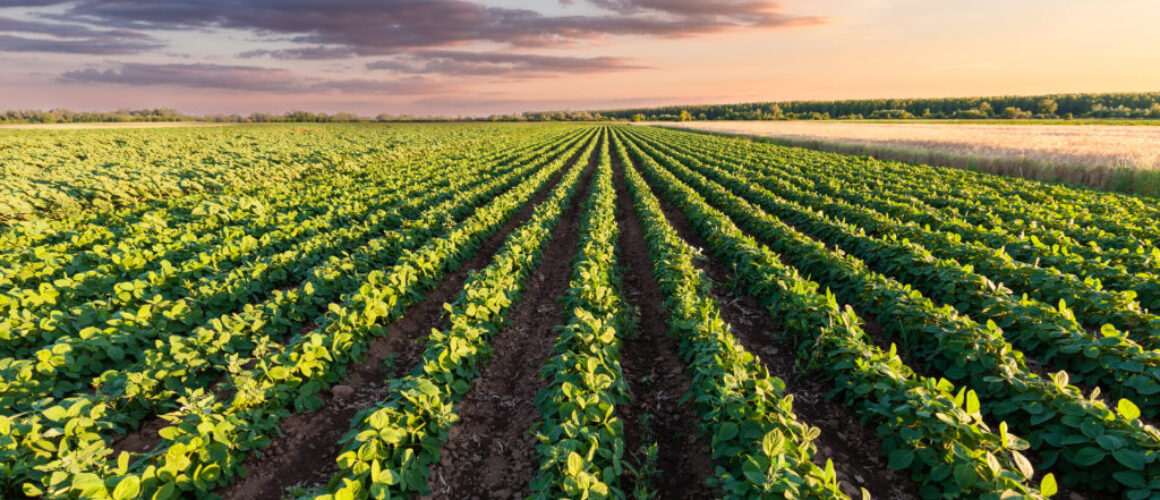Regenerative Agriculture: What It Means and Why It Matters
“Regenerative agriculture” is a buzzworthy phrase being thrown around by the food industry, similar to the way the word “sustainability” has been in years past. But what does “regenerative agriculture” mean? And why is the food industry using it? Well, that depends who you ask. Without outcomes attached to it, it becomes a marketing term.
It’s creating a lot of headlines and has a lot of strong and good intentions behind it. But so did the words “sustainability” and “natural” until they were co-opted. As Matthew Dillon of Clif Bar points out, we have to be careful to not just create buzzwords that are good for marketers. We have to also make sure they are good for farmers.
More than just a buzzword
But here’s the deal: regenerative agriculture is good for farmers because it can take such good care of the soil, which in turn provides a stable and fruitful business for farmers. And why does soil matter? Because the soil is where our food comes from, and if the soil is healthy, our food will be healthy. And you guessed it, we have a much greater chance at health ourselves.
On average, we have just “fifty-seven more years of growing crops,” according to the UN’s Food and Agriculture Organization. That is just fifty-seven more harvests until we have no more topsoil to grow food.
That’s a pretty scary and small number and also where regenerative agriculture comes in.
According to Food Business News, “What makes this issue different is that in the case of natural, organic and non-G.M.O., large food and beverage manufacturers were slow to embrace these movements. By contrast, in the case of regenerative production, mainstream companies are participating in the establishment of standards and establishing partnerships to put those practices in action.”
So what is regenerative agriculture all about?
Regenerative agriculture describes farming and grazing practices that, among other benefits, reverse climate change by rebuilding soil organic matter, and restoring degraded soil biodiversity.
The term regenerative agriculture was first introduced by Medard Gabel (1979), and then developed by Robert Rodale (1983). But not much happened for a mighty long time, until recently in the natural and organics products industry.
My friends at MegaFood give such a straightforward and direct definition of regenerative agriculture: according to Sara Newmark, VP of Social Impact at MegaFood, “It literally begins with the soil!” She explains, “Healthy soil produces crops with higher nutrient densities, and a great way to manage the land for optimal soil health is by implementing regenerative agriculture.”
The way we grow food is destroying our soil. Chemical applications have a profound impact on soil formation. According to MegaFood, “85-90% of plant nutrient acquisition is microbially-mediated so without microbes, plants starve to death. Carbon is no longer being introduced into the soil and as a result of all of this combined, our food is on average 40% less nutrient-dense than it was 50 years ago.”
Another eye-opening statistic!
“Regenerative agriculture is defined as a system of farming principles, patterns, processes and practices that actively enriches soils, biodiversity, ecosystems and watersheds while effectively producing a variety of ecosystem functions and agricultural yields,” as the Carbon Underground states. At the community level, regenerative agriculture can increase farmer and rancher livelihood, along with resilience and the well-being of communities and economies.
Who wouldn’t want that? As of late, farming communities seem to be hammered with bad news.
 Good for People and the Planet
Good for People and the Planet
As the Carbon Underground goes on to say, “Regenerative agriculture is proving to be one of the key ways by which we can reverse global climate change as well as affect positive change within the realms of land system change, biochemical flows, ocean acidification, the hydrological cycle and the revitalization of biodiversity.”
It addresses climate change and increases soil quality. Boom!
Transitioning to regenerative agriculture and storing the excess atmospheric CO2 in soils and biomass presents us with our best opportunity for carbon sequestration and working with the 500 million smallholder farmers who provide 80 percent of the world’s food is a way to do it in a way that feeds people and planet.
As affirmed by soil scientist Dr. Rattan Lal, “A mere two percent increase in the carbon content of the planet’s soils could offset 100 percent of all greenhouse gas emissions going into the atmosphere.”
Let’s do this!
So how do we get there? There are shifts happening in consumer values and this is giving rise to an unprecedented degree of ethical decision-making supportive of the transition to regenerative agriculture.
This is especially true for millennials, of whom 62 percent were found to be willing to pay more to support responsible business practices, responsibly produced food and brands that practice environmental responsibility, according to Regeneration International.
Furthermore, companies like MegaFood, which exists to nourish our world in its nutritional crisis, are leading on this, too. The brand is taking bold action to ensure its vision of a planet in which everyone is truly nourished becomes a reality in our lifetime. The Carbon Underground and Green America, in partnership with Ben & Jerry’s (Unilever), DanoneWave, Annie’s and MegaFood, are currently working on a global verification standard for food grown in a regenerative manner. Through this effort, alongside its internal standard for ethical sourcing, MegaFood hopes to inspire participation in a global movement to restore soils. These standards, which include incentivizing farmers to reach shared goals as well as leveraging new technologies like blockchain to pay for ecosystem services, among others, are being discussed as we speak and we can expect to see great movement this year and into 2019. It couldn’t come soon enough if we only have 57 harvests left.
So what can the consumer do? Support the brands that are pushing regenerative agriculture, get engaged and push for policy. The last thing the food industry needs is another “natural” disaster. Regenerative agriculture solves a lot of problems. It needs and deserves our full support.
This post was created in partnership with MegaFood®. I’m proud to work with brands that care about the health of its consumers and the planet. As always, all opinions and text are my own.
